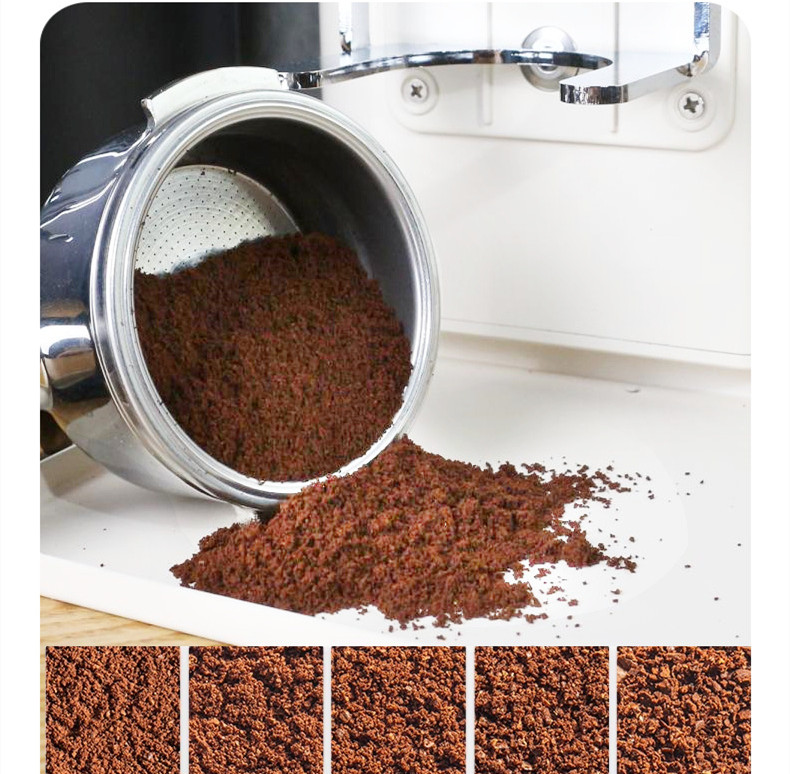The operation of a semi-automatic coffee roaster should be combined with the equipment’s characteristics and roasting principles, and flavor optimization should be achieved through precise control of key parameters. The following is an explanation from three dimensions: operation process, core parameter control, and safety and maintenance:
First, the operation process
Equipment pre-inspection and preheating
Cleaning and inspection: Clean the bean silo, drum and exhaust pipe to ensure there is no residual bean residue or oil stains, and avoid cross-contamination of odors or fire hazards.
Preheating setting: Set the initial temperature according to the target baking degree (such as 180-200°C for light baking, 220-240°C for dark baking), and preheat to a stable state (usually taking 10-15 minutes).
Calibrate the sensor: Check the accuracy of the temperature probe and timer to avoid data deviation causing baking failure.
Feeding and initial dehydration
Feeding quantity control: The single feeding quantity shall not exceed 70% of the drum volume to ensure that the hot air evenly penetrates the bean layer. For instance, for a 500g drum capacity, it is recommended to feed 350g.
Dehydration stage: Rapidly raise the temperature to around 160°C at medium to high heat (such as 80-90% power) and maintain it for 3-5 minutes to evaporate the surface moisture of the beans. At this point, it is necessary to observe the color change of the beans to avoid premature charring.
Development period and flavor formation
Heat adjustment: After dehydration is completed, reduce the heat (such as 60-70%), control the heating rate (5-10°C per minute), and avoid excessive temperature difference between the bean core and the surface.
First explosion and second explosion control:
The first burst: The evaporation of moisture inside the bean body causes a cracking sound, indicating that the Maillard reaction is coming to an end. At this point, it is necessary to decide whether to extend the development period based on flavor requirements.
Second roasting: A characteristic of the deep roasting stage, with a denser sound. It is necessary to quickly determine whether the target roasting degree has been reached (for example, in French deep roasting, the beans need to be roasted before the end of the second roasting intensity period).
Cooling and post-treatment
Rapid cooling: Immediately pour the beans into the cooling tray after taking them out, and turn on the fan or stirring device to reduce the bean temperature to below 40°C (usually taking 2-3 minutes) to prevent the residual heat from continuing to roast.
Standing and shelling: After cooling, let it stand for 12 to 24 hours. Once the flavor stabilizes, remove the silver skin and prepare for packaging or grinding.
Second, core parameter control
Temperature and time curve
Light roasting: The total duration is 8 to 10 minutes. After the first roasting, the beans come out in 1 to 2 minutes, retaining the fruit acid and floral aroma.
Medium roasting: The total duration is 10 to 12 minutes. After the first stir-frying, the beans are removed in 2 to 3 minutes to balance the sweet and sour flavors with the caramelized flavor.
Deep roasting: The total duration is 12 to 15 minutes. The beans come out at the beginning of the second roasting or during the intensive period, highlighting the chocolate and smoky flavors.
The damper and the firepower work in coordination
Dehydration period: Fully open the air door, fully open the heat, rapidly increase the temperature and expel the water.
Development period: Moderately close the air door (50-70%), reduce the heat, and extend the internal reaction time of the beans.
Before the beans are taken out: Fully open the air door, turn off the heat, and use the residual heat to exhaust smoke and cool down.
Observation of the bean body condition
Color change: From light green to light yellow to light brown to dark brown. It needs to be judged in combination with the smell (such as nutty aroma → caramel aroma → smoky aroma).
Glossy surface: Dark-roasted beans have an oily surface, while light-roasted beans do not have an oily luster. It is necessary to avoid over-roasting to prevent carbonization.
Third, safety and maintenance
Operational safety
Protective equipment: Wear heat-resistant gloves and goggles to avoid burns from high temperatures or splashed soybean residue.
Fire prevention measures: The baking room is equipped with fire extinguishers. It is strictly prohibited to leave when the equipment is in operation to prevent the beans from catching fire spontaneously.
Ventilation requirements: Ensure that the smoke exhaust duct is unobstructed to prevent the accumulation of carbon monoxide.
Daily maintenance
Cleaning frequency: Clean the drum, bean bin and residue collection tray after each roasting, and conduct a thorough cleaning of the exhaust system every week.
Sensor calibration: Check the accuracy of the temperature probe and timer monthly. Contact professionals for debugging if necessary.
Component replacement: Regularly replace vulnerable parts such as sealing rings and filters to prevent air leakage or blockage.
Fourth, Common Problems and Solutions
Uneven baking
Reasons: Excessive feeding, insufficient drum speed, and blocked air door.
Solution: Reduce the feeding amount, increase the rotational speed (such as 50-60 revolutions per minute), and clean the air door.
Flavor deviation
Reasons: Improper fire control, insufficient or overly long development period.
Solution: Record each baking parameter and adjust the curve based on cupping feedback.
Equipment failure
Phenomenon: Temperature out of control, drum stuck, poor smoke exhaust.
Handling: Immediately stop the machine and cut off the power supply. Inspect the circuit, motor and pipelines. Contact after-sales service if necessary.
Summary
The operation of a semi-automatic coffee roaster requires a combination of theory (such as thermodynamics and chemical reactions) and practice (such as cupping feedback), and the best parameter combination should be found through repeated experiments. It is recommended that beginners start practicing with a small amount of material input and medium roasting degree, gradually master the characteristics of the equipment and the differences in bean varieties, and ultimately achieve controllable flavor and stable quality.


